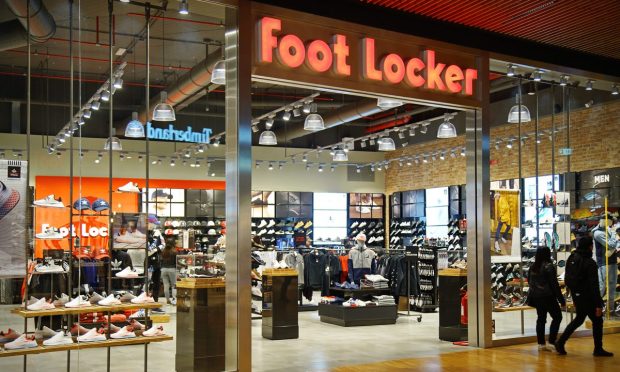Today in Retail: Foot Locker Grows Its Profile In Athletic Footwear Sector; Amazon and Walmart Face Uncertainty As Summer Season Approaches

Today in retail, North Face relies on customer loyalty and enhanced streetwear sales to boost its bottom line and Foot Locker grows its profile, while digital and experiential shopping is changing the way retailers do business. Plus, Ross Stores hasn’t benefitted from shoppers’ bargain hunting as inflation rises to record levels.
VFC’s North Face Leverages Loyalty and Streetwear to Reach Sales Summit
While sales at parent company VF Corp., as well as its three major sister brands (Vans, Timberland and Dickies) all saw 10% to 25% declines in the Asia Pacific region for the three months ended April 2, North Face delivered 24% APAC regional revenue growth for the quarter, alongside the brand’s 33% global gains for the just-completed full year.
Although retiring North Face Global Brand President Steve Murray will be replaced by 16-year Nike executive Nicole Otto next month, the 30-year apparel and footwear industry veteran said the brand’s current results were set in motion years ago, long before things like COVID-19, inflation and supply chain bottlenecks were even on the map, but have also been helped by external tailwinds including the general buoyancy of the outdoor sports category that has been rising for years.
North Face was acquired by VFC, the Denver-based apparel conglomerate, 22 years ago and has been steady and growing stalwart of the company ever since.
Foot Locker Gains Stronger Foothold in Athletic Retail Market
Foot Locker’s stock price was up more than 5% in early trading Friday (May 20) after the company reported its fiscal 2022 first-quarter earnings results.
The company’s total sales jumped 1% for the three months ending April 30, although comparable-store sales dropped about 2% in the same period, meaning shoppers are likely fulfilling their apparel and shoe needs by shopping for them online more often.
Earlier this month, Foot Locker became Adidas’ lead partner in basketball as part of a deal that will also accelerate so-called “energy” and “hype” launches, and develop and expand the brand in the women’s, kids’ and apparel sectors of the business.
Ross Stores Not Feeling Benefit of Shoppers’ Bargain Hunting
The inflation-fueled quest by shoppers to maximize every dollar clearly hasn’t helped discount fashion retailer Ross Stores, which saw its stock dip almost 25% early Friday (May 20) following a first-quarter earnings report that was filled with unmet goals and revised future expectations.
Ross’ sales dipped about 5% to $4.3 million for the three months ending April 30, according to the company said in a press release, adding that its inventory levels also rose nearly 60% for the quarter.
Ross’ Q1 performance shows that not all retailers are feeling the “trade-down effect” that discount retailer Ollie’s said in March would come with escalating inflation rates.
AMZN vs WMT Weekly: Retailers Limp Into Normally Sizzling Dog Days of Summer
With the official kick-off of summer just a week away and our instinctive perennial urge to get outside, go places, have fun and relax poised to kick in, this year’s hot season looks set to be different than what we’ve come to expect in recent decades.
It’s not just Amazon and Walmart seeing the change, but every single general merchandise, apparel and hardlines retailer on the block. Acknowledging that change and accepting the reality that once-in-a-lifetime inflation, paired with rising interest rates and the growing probability of recession, are deeply affecting consumer spending habits.
While demand for cut-rate cold cuts is up, Walmart U.S. CEO John Furner and his boss, CEO Doug McMillon, noted that there were also pockets of strength in certain high-ticket items like gaming consoles and patio furniture sets.
Retailers Rush to Rethink Stores Amid Shift to Digital, Experiential Shopping
Andre Machicao, senior vice president, merchant solutions at Cybersource, a Visa solution, told PYMNTS CEO Karen Webster the omnichannel movement was “hugely catalyzed” by the global health crisis. Now, it’s part of everyday life.
COVID-19 appears to be in retreat, but the digital shift it forced isn’t going anywhere. What it has done is create a new set of experiential challenges for merchants.
Discussing key findings from “The 2022 Global Digital Shopping Playbook, U.S. Edition,” a PYMNTS and Cybersource collaboration, Machicao noted that only 28% of U.S. consumers are using smartphones to navigate brick-and-mortar experiences, calling it “relatively low compared to some of the other countries in the global study.” However, where it is happening is improving consumers’ satisfaction with the store shopping experience.
